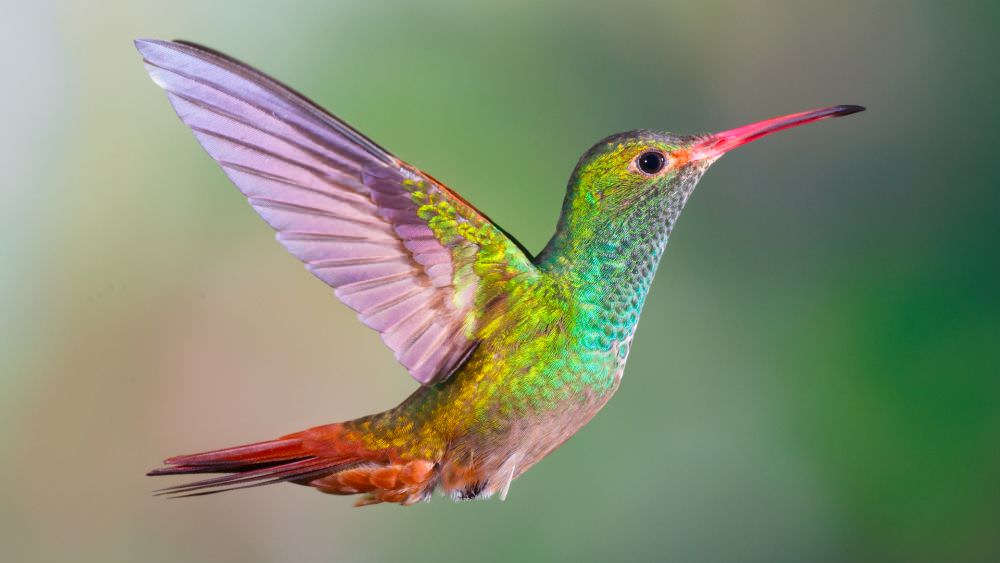Hummingbirds Have More Broad Color Spectrum Vision Than Humans
Scientists have acknowledged for a long time that birds probably have a better color vision than mankind. A recent study, published in the journal Proceedings of National Academy of Sciences, has confirmed that wild hummingbirds have a much broad color spectrum vision than humans. As it turns out the little birds can see colors that humans cannot detect.
Alike most primates, humans have a trichromatic vision, which means that human eyes have three types of color-sensitive receptors or cones – blue, green, and red. However, birds have four color cones, which means they are tetrachromatic.
But, can birds discriminate non-spectral colors, and are these colors behaviorally and ecologically relevant? Theoretically, the four-color cones of birds let them discriminate a broader range of colors, including the ultraviolet spectrum, which includes colors like UV-green and UV- red. Color vision helps them select their food and mates, and it also helps them avoid predators.

Image: SciTech Europa
A Princeton University evolutionary biologist, Mary Stoddard alone with her colleagues carried out a series of field experiments with wild broad-tailed hummingbirds near the Rocky Mountain Biological Laboratory in Colorado. The study unearthed remarkable results that the birds could discern spectral-colored feeders from feeders in non-spectral colors.
Stoddard believes that doing such experiments in the wild are very essential, as it provides with an understanding of birds’ sensory experience of the world. While most detailed perceptual experiments on birds are undertaken in the labs, study of how birds use their color vision in their daily lives, in their natural habitat is much fascinating and offers more information.
According to biologist, Trevor Price, at the University of Chicago, the study is a huge step forward that offers the most thorough look at how birds distinguish color to date. He said that mankind has only started to understand the concept of color vision in animals, which is quite bold and fascinating as well.
The researchers set up several tube bird feeders outfitted with LED devices near the laboratory to conduct this study. They programmed LED devices near the feeders to display a broad range of colors, depending on whether the feeder held either a small amount of sugary water or plain water.
Stoddard also added,
Hummingbirds are perfect for studying color vision in the wild. These sugar fiends have evolved to respond to flower colors that advertise a nectar reward, so they can learn color associations rapidly and with little training.
Over three field seasons from 2016 to 2018, the scientists conducted 19 experiments and analysed over 6,000 hummingbird visits. By keeping track of visiting birds to the feeders, the scientists exhibited that broad-tailed hummingbirds regularly chose the feeder with the sweet treat, irrespective of whether they had a non-spectral or spectral hue.
Even when the colors looked the same to us—for example, when the birds had to choose from a feeder colored UV-green and one that was simply green—they could see the difference.
Said Stoddard.
For instance, bees can see ultraviolet bull’s-eye patterns in yellow flowers, which lead them to the nectar, while humans only see a yellow blossom. The researchers’ team analyzed the collected data of various bird plumage color and plant colors to determine why hummingbirds see such a wide range of colors.
Evidently, the hummingbirds are able to see 30 percent of the birds’ plumage and 35 percent of the plant colors in non-spectral tints – “colors that humans cannot even imagine,” as Stoddard puts it. This ability certainly helps the small birds to locate a wide variety of plants and their nectar.
This study on hummingbirds having a broad color spectrum vision could open whole new aspects about various species of birds and animals having the ability to see a wide of range of color spectrum that wasn’t known thus far.
